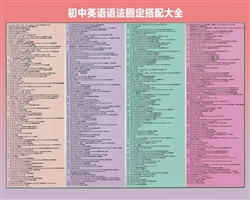主谓一致的易错点归纳
主谓一致的易错点归纳
■不定式短语、动词-ing形式或名词性从句作主语,谓语动词用单数形式。如:
Remember /To remember English words is not easy. 记英语单词不容易。www.34en.com
Who will do the job hasn’t been decided yet. 谁来做这项工作还没决定。
注:what引导主语从句时,如果其表语是复数形式,谓语动词要用复数形式。如:
What he took with him were two books. 他带去的是两本书。
■“名词或代词+由with, together with, along with, as well as, besides, but ,except, including, in addition to, like, no less than, rather than等引起的短语”作主语时,谓语动词与前面的名词或代词的数一致。如:
Mr Li together with his two sons has gone to the cinema. 李先生和他的两个儿子看电影去了。
No one except the two boys was late for class. 除了两个男孩外,没有一个人迟到。
Li Ming, rather than his classmates, has let out the secret. 是李明透露了那个消息而不是他的同学透露的。
■“more than one/many a + 单数名词”作主语时,谓语动词用单数形式。如:
More than one person has known it. 不止一个人知道这件事。
Many a worker was killed in the accident. 在这个事故中死了许多工人。
注:“More+复数名词 than one”作主语,谓语则用复数形式。如:
More persons than one have known it. 不止一个人知道这件事。
■“一两个……”,用“one or two+名词复数”表达时,谓语用复数;用“a(an) +名词单数or two”表达时,谓语动词用单数形式。如:
One or two days are enough for them.
=A day or two is enough for them. 给他们一两天时间足够了。
■and连接两个名词一起作主语时,谓语动词一般用复数形式。如:
Lily and Kite are kind to me. 莉莉和凯特都对我很好。
但是,当两个名词表示同一人、同一事物、同一概念或一个完整的东西时(其特征是and后的名词前无任何冠词) ,谓语动词用单数形式。如:
The teacher and writer has come. 那个教师兼作家已经来了。
(The teacher and the writer have come. 那个教师和那个作家都到来了。)
Bread and butter is a daily food in the West. 奶油面包是西方的日常食物。
A knife and fork is on the table. 有一副刀叉在桌上。
注:当and连接的并列单数主语前分别有no,each, every, many a, more than one 等修饰时,谓语动词用单数形式。如:
Many a teacher and many a student has seen the film. 许多教师和学生都看过这部电影。
■不定代词one, no one, the other, another, anyone, anybody, someone, somebody, everyone, everybody, nobody, anything, something, everything, nothing, each, either 以及被each, every修饰的名词做主语,尽管有些表达复数意义,但是,它们的谓语应该用单数形式。如:
Is everybody here today? 大家都到齐了吗?
Neither (book) is good. 两本书都不好。
None knows the weight of another’s burden. 见人挑担不吃力。
注:neither, none做主语时,口语中或非正式文字中,谓语动词通常用复数,正式的书面语中用单数。如:
Are/Is neither of the teams playing this week? 这个星期两个队中有哪一个队要进行比赛?
None of them has/have been to the Great Wall. 他们中没有一个人去过长城。
不过,none作主语,其表语是单数,谓语用单数;表语是复数,谓语则用复数。
■在定语从句中,当关系代词 who, which或 that做主语时,从句中的谓语动词应该与先行词保持一致。如:
The teacher who teaches us English is from England. 教我们英语的教师是英国人。
Are these the books that were bought yesterday? 这些就是昨天买的书吗?
I, who am a new teacher, will teach you English. 我,一个新教师,将教你们英语。
■“one of+名词复数”后面的定语从句, 谓语动词应该用复数;而“the (only) one of + 名词复数”后面的定语从句的谓语应该用单数形式。如:
He is one of the students that have passed the exam 他是通过了考试的学生之一。
He is the (only) one of the students that has passed the exam. 他就是通过考试的那个学生。
■某些集体名词,如family, audience, class, club, company, crew, enemy, government, group, party, public, team等作主语时,如果作为一个整体看待,谓语动词用单数形式,如果就其中一个个成员而言,谓语动词用复单数形式。如:
My family are all fond of going to the cinema. 我全家都爱看电影。
The family is rather big, with twelve people in all. 这个家庭很大,总共有12个人。
■当表示时间、距离、金额等度量的复数名词作主语,把它看作一个整体时,谓语动词一般用单数。如:
Surely 15 minutes is enough time for you to have a coffee. 你喝杯咖啡15分钟当然足够了。
但若与pass, go by, spend, waste等连用时,谓语动词用复数。如:
Six months have passed, and we still have no news of them. 六个月过去了,我们依然没有他们的消息
■由两个部分构成一个整体的物品名词做主语,如shoes, glasses, boots, socks, scissors, compasses, trousers, shorts等,谓语通常用复数形式。如:
His trousers are new. 他的裤子是新的。
但带有pair这样的量词时,谓语要与量词的数保持一致。如:
That pair of trousers was sold out. 那条裤子卖出去了。
■“分数(百分数)+ of + 名词”以及 “all (most, some, any, half, a lot, part, the rest) + of + 名词”做主语时,谓语动词的数与of后的名词的数一致。如:
Three-fourths of the surface of the earth is water. 地表四分之三都是水。
Twenty percent of the oranges are bad. 这桔子百分之二十都坏了。
All of my classmates like music. 我们所有的同学都喜欢音乐。
All of the water is gone. 那些水全都没有了。
The rest of the students have gone home. 其余的学生都回家了。
The rest of the money was stolen. 其作的钱被人偷了。
■“a (the, this, that) kind /sort / type of + 名词”做主语,谓语用单数形式;但“these (those, all, many, some) kinds of + 名词”做主语,谓语则用复数形式。如:
This kind of book is useful for us. 这种书对我们很用。
Many kinds of shoes are on sale in that shop. 那个店里有许多种鞋出售。
注:“名词+ of a (the, this, that, these, those, all, some, many等) + kind(s) ”做主语,谓语动词的数与前面名词的数一致。如:
Book of this kind is useful for us. 这种书对我们有用。
Apples of these kinds are sour. 这种苹果是酸的。
■在主谓倒装的句子中,谓语动词的数应与其后的主语一致。如:
On the wall hang two large portraits. 墙上挂着两幅大肖像。
Between the two rows of trees stands the teaching building. 要两排树之间是教学楼。
■“a number of +复数名词”意为“许多”,作主语时,谓语动词用复数;“the number of +复数名词”意为“……的数目”,作主语时,谓语动词用单数。如:
The number of people invited was fifty, but a number of them were absent for different reasons. 被邀请的人是五十个,但由许多人由于不同原因缺席了。
■“a lot of /lots of /plenty of /a large quantity of /a large amount of +名词”作主语,谓语动词的数与名词的数一致;如:
A large amount of damage was done in a very short time. 在短时间内造成了很大的损害。
A great amount of our investments are in property. 我们大量的钱都投资到房地产中。
但“(large /huge) quantities /amounts of名词”作主语,谓语动词一般用复数。如:
Large amounts of money were spent on the bridge. 那座桥耗费了大量金钱。
■“a +单数名词+and a half”和“one and a half +复数名词”做主语,谓语动词用单数形式。如:
One and a half pears has been left on the table. 盘子里剩下一个半梨子。
- 关键字:
- 上一篇: 这类结构的谓语应与哪个主语保持一致
- 下一篇:采用“就近原则”的两个典型用法
友友评论:
内容相关随机推荐:
暂无相关信息!
- 相关链接:
-
资源说明:
英语语法网英语语法网-句类语法-《主谓一致的易错点归纳》
 。
。




